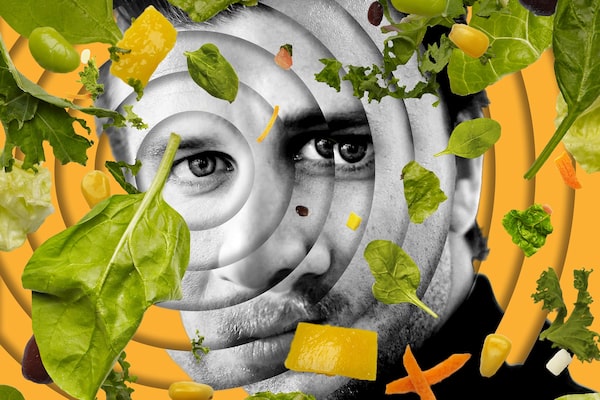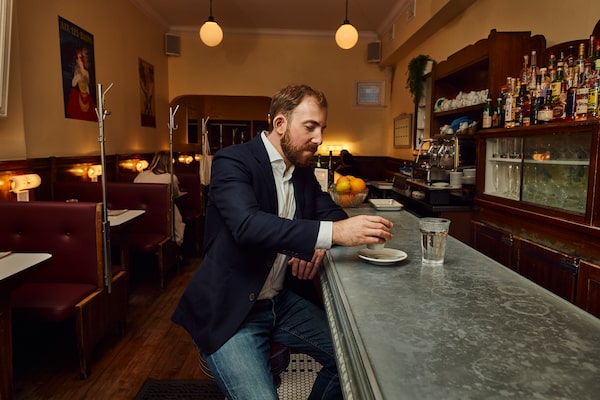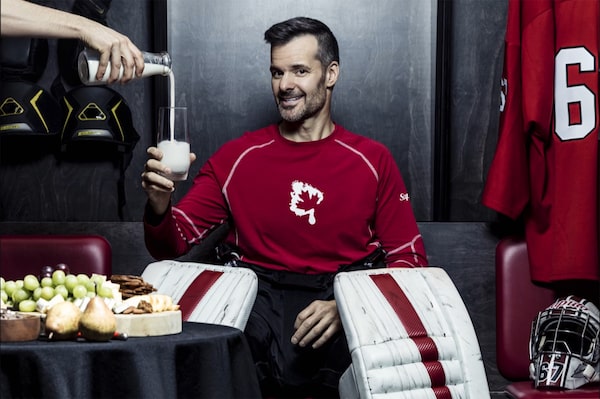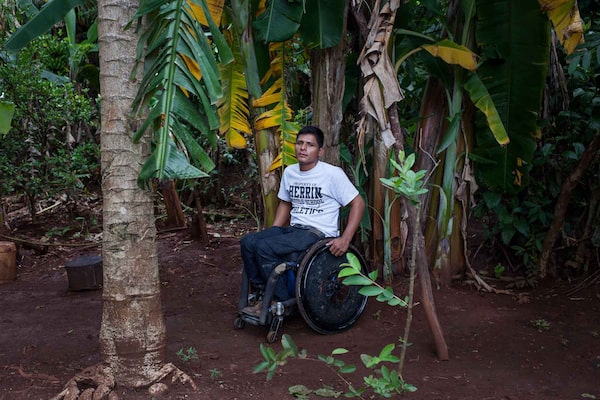Meet the colourful personalities in Canadian business and delve into the stories and issues behind this year’s headlines.
You can download all 10 issues of Report on Business magazine for 2019 here
How my great-grandfather’s Dofasco steel empire rose and fell, and his descendants with it

Zander ShermanJoanne Ratajczak/The Globe and Mail
It’s my brother. It’s my mother too. All of us, really – the whole Sherman family. Today, we’re more like the Kennedys than the Carnegies: more cursed than blessed. It started in 1994, when my grandfather died. Neither one of his sons succeeded him. My grandfather’s estate – a mansion, cars, an island, stock – has since evaporated. My father’s half was halved in 2002, when my parents split up and our house burned down. In 2006, Dofasco was acquired in a hostile takeover. Then it was the 2008 recession, and whatever money we had left was nearly gone.
People say I’m like my grandfather: cold on the outside, molten within. Not that it matters. At this point, the only trace of Dofasco left in our family is in my steely-eyed stare. I’ve seen our fortunes change, our lives go up in smoke. I’ve seen my brother lose his mind, my family lose everything. Read Zander Sherman’s full story here.
Fall of the romaine empire: Who’s to blame for Freshii’s wilting fortunes?

Matthew Corrin (Photo illustration Justin Poulsen; source photo Darryl Dyck/CP)Justin Poulsen/The Globe and Mail
Freshii, the healthy fast food chain, has spread like some kind of nutritious weed, sprouting up between restaurants better known for burgers and fries than kale and quinoa. The Toronto-based company now has nearly 450 stores in 16 countries, including far-flung locations such as Saudi Arabia, Colombia and Ecuador. Chairman and CEO Matthew Corrin, who opened the first Freshii in 2005 at age 23, had the foresight to recognize the appeal of quick, fresh food and the hustle to aggressively expand the concept.
Freshii’s stock price has collapsed more than 80 per cent since its initial public offering in January, 2017, and trades around $2 today. (Buyers of the IPO paid $11.50.) The decline is all the more stunning considering healthy eating is still the hottest trend in the restaurant industry, and Freshii was one of the first to market. Corrin, on a conference call in May, gave the impression of a founder who had searched his soul for an explanation and was preparing to offer himself as a sacrifice. “In short, I fired myself,” he said.
He paused, “I then rehired myself as a new CEO.” And that might just be Freshii’s biggest problem. Read Joe Castaldo’s full story here.
Magna is shutting down an Ontario plant, throwing hundreds out of work. What happens when a town loses its largest employer?

Grenville CastingsIan Willms
On June 18, 2018, John Fenik, the mayor of Perth, Ont., received an unexpected call from a man he identifies only as “a senior executive” at Magna International, the hugely profitable Canadian-based auto-parts maker – a company that operates about 439 facilities in 28 countries on five continents, the lot of them producing $53-billion in annual sales and nearly $3-billion in profits. “What the Magna guy told me,” says Fenik, “was that company officials were on their way to Perth, and that at 4:30 they would be addressing Grenville ’s workforce to let them know Magna was shutting the plant down for good.”
Perth’s biggest private employer in recent years has been an old-style aluminum auto-parts foundry called Grenville Castings – “a real descent-into-hell sort of place,” as one employee puts it – located in a nondescript industrial park on the south side of town. Many of the plant’s 380 full-time non-unionized employees have survived for years there, under working conditions that include 12-hour shifts, unbearable noise, objectionable fumes, and interior temperatures that in summer can soar to 60°C and in winter drop to the freezing point.
Question: What does a town of 6,000 do to give itself a fighting chance on a globalized map in restless economic times, on a puny budget? How does it survive trade wars and climate change and once-faithful industries that have decided to trash their citizenship? Read Charles Wilkins’s full story here.
Hip robo-adviser Wealthsimple’s audacious plan to take on the big banks

Michael KatchenMarkian Lozowchuk
CEO Michael Katchen co-founded Wealthsimple in 2014 as a so-called robo-adviser. The company uses algorithms to assemble and rebalance low-cost, ETF-based investment portfolios, largely for millennials ignored by the incumbents. Katchen, 31, and his team designed Wealthsimple’s website and app to be quick and painless to use, free of any financial jargon, excessive fees or service glitches that might detract from the experience.
Katchen’s ambitions extend far beyond a digital investment service. “Our explicit goal is to replace a bank as our clients’ primary financial relationship,” he says. For that to happen, Wealthsimple has to become a much more diversified financial services provider.
He is betting that what has worked for his company until now – using technology to create a better overall experience than its rivals – will continue to work as it adds new products. But as the company diversifies, Katchen will be competing against financial incumbents on multiple fronts, fighting to keep existing customers while wooing others from the competition. If there’s one thing giant banks are concerned about, it’s maintaining a deep relationship with their customers. That’s the bond that Katchen wants to break. Read Joe Castaldo’s full story here.
New CEO of the year: Susan Senecal revived the A&W brand by listening to what millennials want and giving it to them

A&W CEO Susan SenecalLucy Lu/The Globe and Mail
As no one will have missed, A&W Food Services of Canada released its Beyond Meat burger in October, 2018, the first plant-based burger in North America from a fast food chain. The release was so successful that A&W ran out of patties and had to suspend sales for a month before relaunching the product. Since then, they haven’t looked back.
Susan Senecal is 18 months into her role as A&W’s CEO, but a company veteran, starting as an area manager in 1992 and doing stints as both chief marketing officer and chief operating officer. Even she doesn’t pretend to have seen this all coming exactly as it played out.
As with all things in the A&W world under Senecal’s leadership, that’s not because it was an accident either. A&W had done their market research. They knew their customers. They’d spent the better part of three years sampling plant-based products at the A&W Innovation Centre. When they tasted Beyond Meat, Senecal says, they knew immediately the search was over. And they were pretty sure they knew which of their guests would try the new product. Read Timothy Taylor’s full story here.
Back from death’s door, this CEO has a hot new venture – and investors are piling in

Jonathan GoodmanGUILLAUME SIMONEAU
Jonathan Ross Goodman isn’t supposed to be alive. Yet here he is, answering the door of his new home on a Friday evening, wearing a sharp blazer and an infectious smile, his brood standing close like a protective secret service detail.
The 51-year-old Montreal multimillionaire and pharmaceutical entrepreneur has experienced trauma you can’t immediately recognize when you meet him. First outrunning cancer and later coming back from a monstrous brain injury, he came perilously close to losing everything and everyone. Unfortunately, Goodman’s body reminds him daily of this near-loss by sapping his energy and clouding his short-term memory.
He was always risk-averse, but he’s more so now, watching and waiting for attractive deal-making opportunities like the obsessive penny-pincher he is. Goodman is accomplished, ambitious, self-possessed and deeply altruistic. He has all the polish of Bay Street without the cold greed.
Investors in his current company, Knight Therapeutics Inc., have placed a dizzying amount of faith in him. The reason is obvious: He made a ton of money for them with his first company, Paladin Labs Inc. They want a repeat. Read Nicolas Van Praet’s full story here.
Le Grand Fromage: How billionaire Lino Saputo Jr. built a global dairy empire and stood up to Big Milk

Lino Saputo Jr.Studio Le Quartier/Globe and Mail
“I hope they don’t view me as ‘that billionaire from Canada’,” says Canadian billionaire Lino Saputo Jr.
Saputo, CEO of the giant cheese, milk and yogurt company that shares his name, is sitting in the private locker room he installed in the personal hockey arena he built next to the luxury auto club he owns in Montreal. It’s literally and figuratively as far away from the world of Australian dairy farming as you can get. Nevertheless, the “they” he’s referring to are farmers Down Under.
Saputo has been spending a lot of time in Australia lately. Last year, his company acquired the country’s largest dairy processor, a farmer-owned co-op called Murray Goulburn. To seal the deal, Saputo spent weeks criss-crossing thousands of kilometres of arid grasslands, making his pitch to farmers at town hall meetings. In some cases, he even drove directly to farms to sit at their kitchen tables and field questions one-on-one.
Lino Saputo Jr. is a man of contradictions, able to move back and forth between diverse worlds with remarkable ease. In one moment, the impossibly young-looking 52-year-old might be decked out in a shimmering suit and Bono-style glasses for the ritzy launch of a new Rolls Royce model; the next, he’s on the ice in his goalie gear, blocking shots from blue-collar plant workers.
Saputo’s disarming manner and blunt honesty have much to do with how the company got to where it is today. But things are far from idyllic in the land of milk and money. Read Jason Kirby’s full story here.
Revenge of the nerds: How reading app Wattpad is using AI to create the next Disney

Allen Lau, left, with Aron Levitz, general manager of Wattpad Studios.Sandy Nicholson/Fuze Reps
Shrieks fill the lobby of the Pacific Theatres at the Grove in Los Angeles as the stars of the young-adult romance film After arrive to walk the red carpet. Inside the theatre, one teenager starts to freak out as she realizes she’s standing in the same room as Anna Todd, the author whose books served as the source for the movie. Six years ago, Todd was an aimless 24-year-old military wife living in Texas when she began tapping out After on her smartphone in a Target checkout line. It started as a piece of fan fiction based on the boy band One Direction, and it made her a publishing superstar.
But this night in early April really belongs to the Toronto company that exposed Todd’s story to the world in the first place: Wattpad Corp. After is the first Hollywood film adapted for the big screen from a story published on Wattpad’s online platform, which connects writers with readers. Since its launch in 2006, Wattpad has become a social networking star, with more than 70 million users, predominantly young women from 13 to 35.
Wattpad has ambitions far beyond ad-driven social media. By using artificial intelligence algorithms to mine that data, Wattpad believes it can determine which of its stories could hit it big as books, movies or shows. “You can view Wattpad as an intellectual property factory that can generate entertainment properties organically and in large quantity,” says co-founder and CEO Allen Lau. Writers “might not realize they have a big hit on their hands, but the numbers will not lie.” Read Sean Silcoff’s full story here.
Canadian mines have wreaked havoc in developing countries for decades. Finally, there’s hope for a solution

German Chub ChocValerian Mazataud in collaboration with Sarah R. Champagne/The Globe and Mail
German Chub Choc of Guatemala is paralyzed and uses a wheelchair. And he says it all started with a Canadian-owned mine.
In 2009, protests by Mayan Q’eqchi’ people against the Fenix nickel mine turned violent. He and Rosa Elivira Choc Ich say they were attacked by security forces hired by a subsidiary of the mine’s owner, Canada’s Hudbay Minerals. Another man was allegedly cut with machetes and shot in the head.
Their story isn’t unique. For decades, Canadian mining operations have wreaked havoc in developing countries. Villages have been razed, water supplies poisoned. Allegations of rape and murder have emerged.
But now, victims are finding a new path for justice in Canadian courts. Could that path lead to a brighter future for all of our mines? Read Paul Christopher Webster’s full story here.
Can this B.C. company be part of the climate change solution? Bill Gates and others are betting yes

Carbon Engineering pilot plant in Squamish, B.C.Alana Paterson
David Keith would like you to know that his technology for sucking carbon dioxide directly out of the atmosphere is not a single, spectacular solution for climate change.
He especially discourages any suggestion that Carbon Engineering, the company he founded in 2009 to develop a simple, scalable method for direct air capture of CO2, is engaged in some kind of climate-mitigating “moon shot.” In a conversation from Harvard University, where Keith has appointments in both the Paulson School of Engineering and Applied Sciences, and the Kennedy School of Government, he responds with a sharp, “That’s ridiculous. It’s a stupid thing to say.”
But here’s the thing: Carbon Engineering is already giving tours of a functional direct air capture facility that may, indeed, provide a spectacular – if not singular – solution to the hardest part of the climate change problem. And some pretty savvy investors, including Bill Gates and Canadian Natural Resources Ltd. (CNRL) cofounder Murray Edwards, are betting CE has the key. What began 10 years ago as a pilot with about $3.5 million in seed money is now a proven technology, capturing CO2 from the air. Read Richard Littlemore’s full story here.
Compiled by S.R. Slobodian. Excerpts have been edited and condensed.